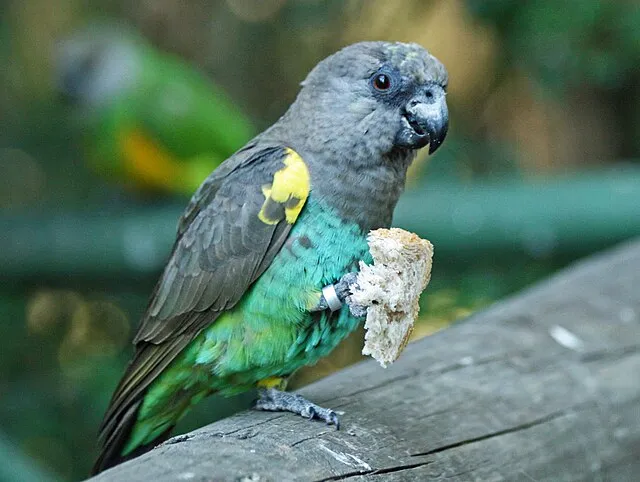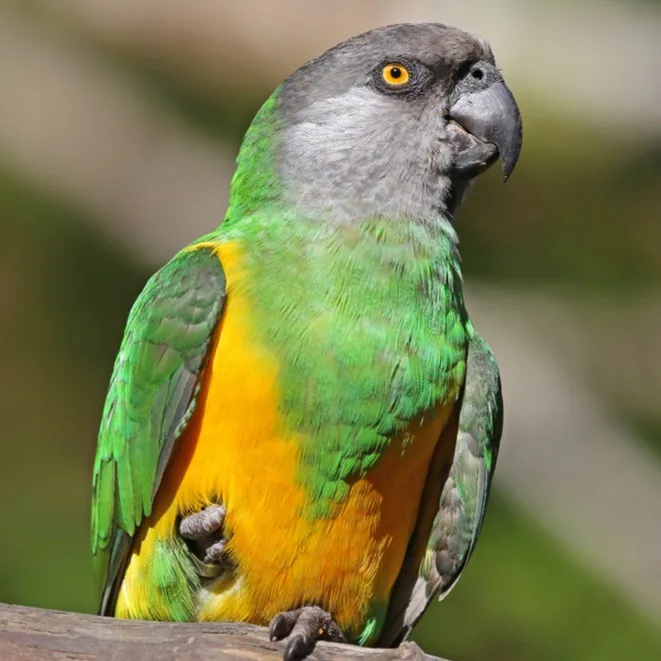Media
Pet Services & Shops
Happy Mart
T-Shirts
Rescue & Shelters
Events
All Pets
Media
Rescue & Shelters
Pet Services & Shops
Happy Mart
Events
T-Shirts
Home
/
Bird Breeds
/
African Grey Parrot
African Grey Parrot
Origin
Central African Republic
Size
Medium Breed
Ideal Weather
18º-30ºC
Avg Monthly Expenses
₹1,000
Basic Lifestyle
₹2,000
Premium Lifestyle
Top 5 Traits
Intelligent
Talkative
Social
Curious
Affectionate



by Happy Pet Team
Quick information about the African Grey
Characteristics
Affection
Not Friendly
Super Friendly
Vocalization
Silent
Vocal
Intelligence
Low
High
Social Behavior
Prefer Isolation
Very Social
What do African Greys eat?
Monthly Food Expenses
₹ 500 - ₹ 1,000
Ideal weight
400 - 600 grams
Essential Nutrients
Protein
Carbohydrates
Fats
Vitamins
List of foods
Seeds
Nuts
Fruits
Vegetables
Legumes
Sprouts
Pellets
Never feed these foods to African Grey Parrot
Avoid anything with these ingredients
Alcohol
Chocolate
Avocado
Caffeine
Garlic
Onions
High-fat foods
Health
Avg Monthly Expenses
₹ 500 - ₹ 1,000
Recognising Stress
Feather Plucking
Excessive Vocalization
Tail Bobbing
Aggression
Withdrawal or Hiding
Loss of Appetite
Repetitive Movements
Common Health Issues
Psittacosis
Respiratory Infections
Fatty liver disease
Feather Plucking
Psittacine Beak and Feather Disease (PBFD)
Aspergillosis
Energy Level
Medium
Preventative measure
Physical checkup every 6-12 months
Annual Blood Work
Environmental Enrichment
Avoid Sudden Diet Changes
Mental Stimulation
Physical Stimulation
Medical Care
Prerequisites to pet a African Grey Parrot
Time Commitment.
Noise Tolerance.
Living Space.
Stress-free Environment.
Which is the best habitat for an African Grey?
Initial Setup Cost
₹ 3,000 - ₹ 4,000
Monthly Expenses
₹ 1,500 - ₹ 2,000
Essential Equipment
Bird Cage
Perches
Food/ water dishes
Toys and Enrichment
Cage Liner Paper
Cuttle Bone
Cage Cleaning Brush
Compatible mates
Timneh African Grey Parrot.
Amazon Parrot.
Eclectus Parrot.
Cockatiel.

Written by
Happy Pet Team
Author
Frequently Asked Questions
Are African Grey Parrots good pets?
African Grey parrots can be great family pets, but only if you’re ready for a big commitment. Their intelligence, affectionate nature, and talking ability make them amazing companions. However, they need constant attention, daily mental and physical stimulation, a large cage. They are medium to large birds and can be loud and messy. In the right home, they’re loving and loyal, but not with everyone.
What should my African Grey eat every day?
Feed at least 60–80% high-quality pellets, plus fresh veggies, fruits, and sprouted seeds. Add nuts or treats a few times a week. Variety is important!
What foods should my African Grey avoid?
Never feed avocado, chocolate, caffeine, alcohol, onion, garlic, raw beans, fruit pits, nightshade parts, xylitol, or salty/processed foods—they're toxic or unhealthy.
Where do African Greys live in the wild?
They live in forests of West and Central Africa, up to 2,200 m elevation. They use forest edges, savannas, mangroves, and gardens to roost and forage.
Where should I keep my African Grey Parrot at home?
Keep the cage in a busy room but in a corner so that your bird can rest when they want to. Make sure there are natural perches and toys. Let them out daily to move and explore safely indoors or in enclosed areas.




